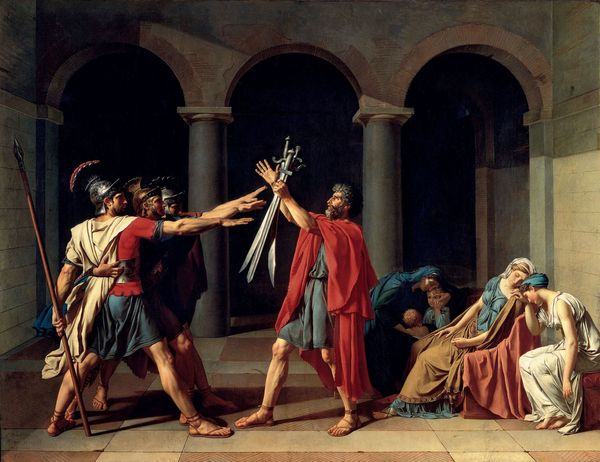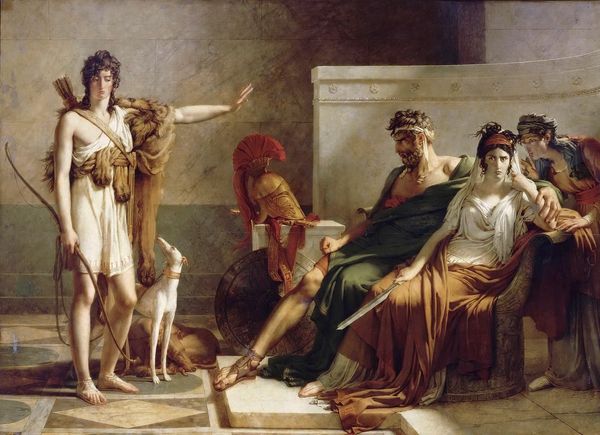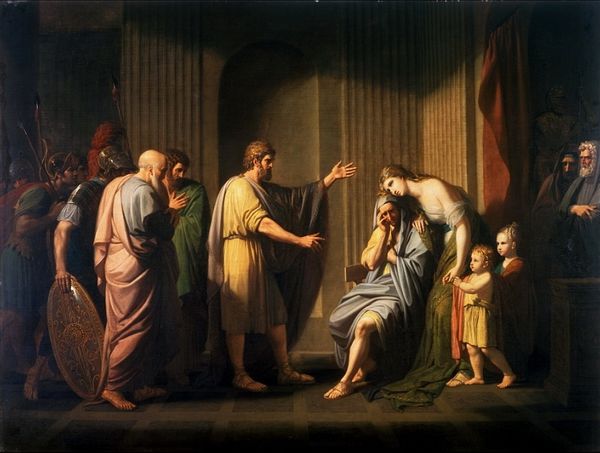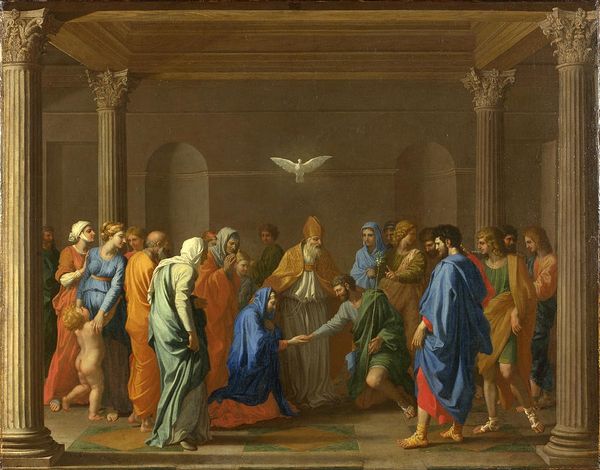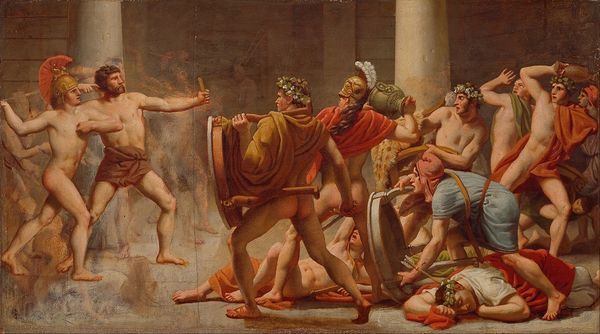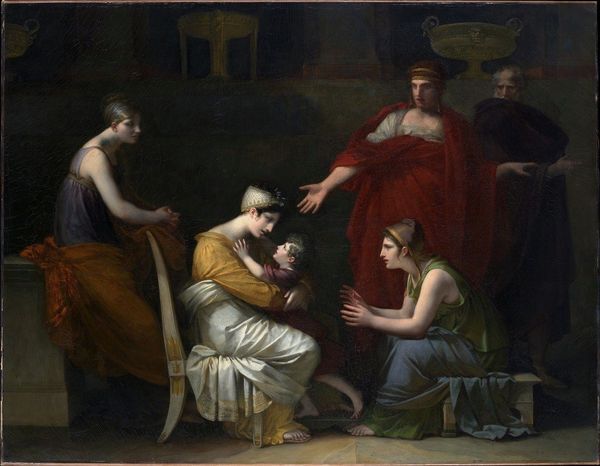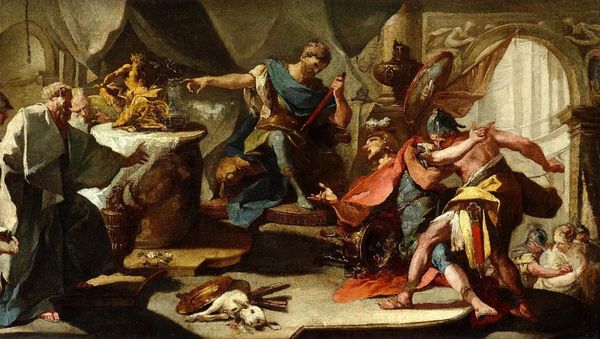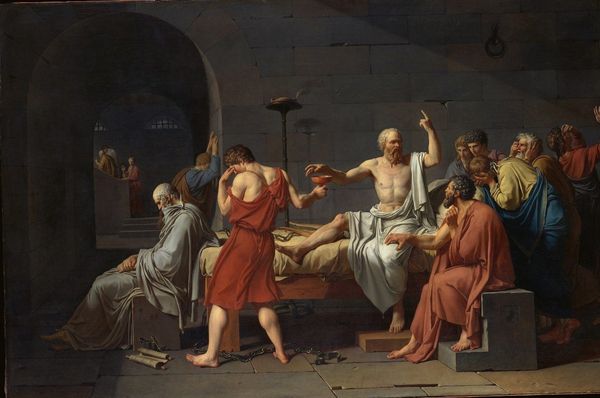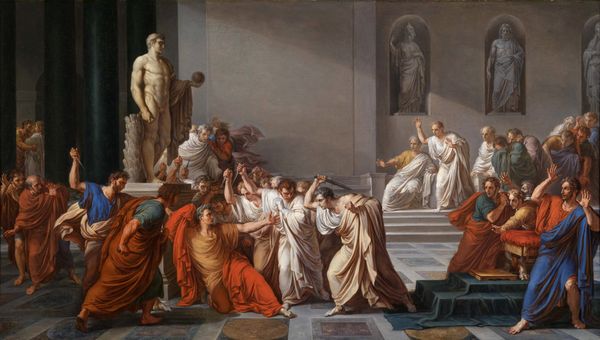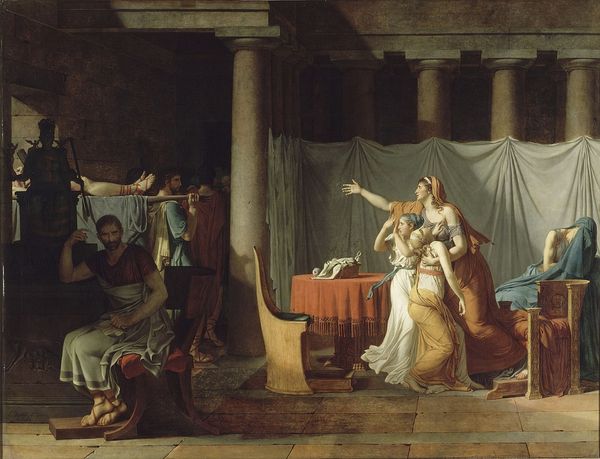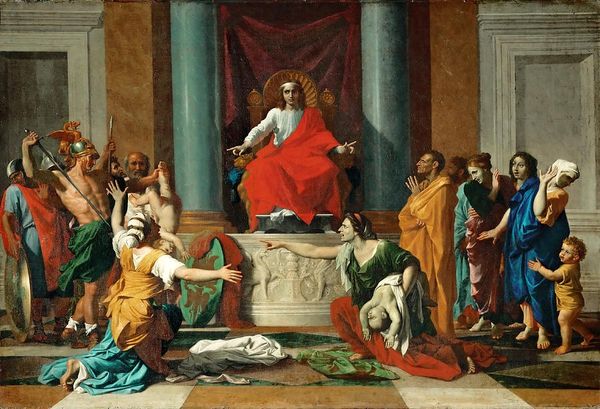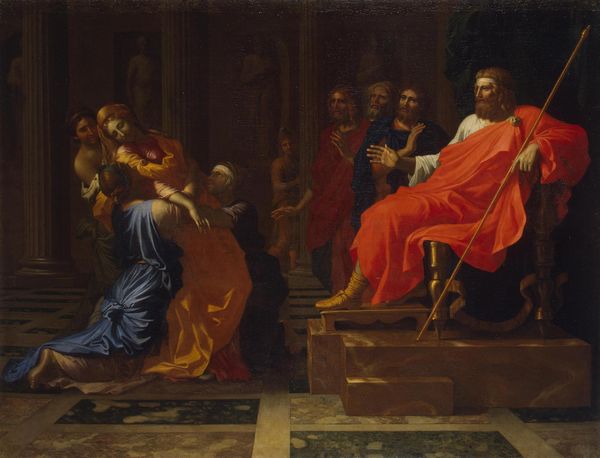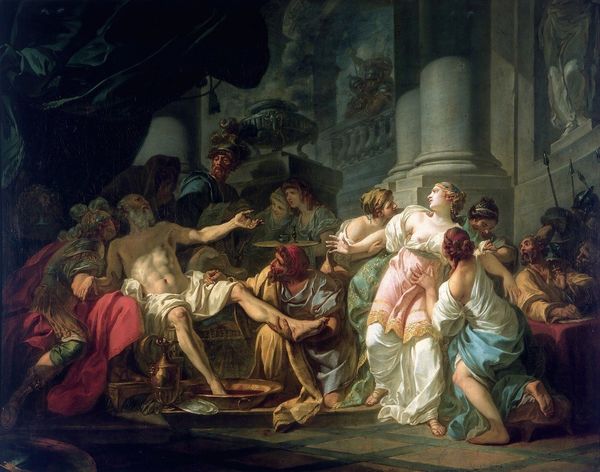
painting, oil-paint
#
figurative
#
neoclacissism
#
narrative-art
#
painting
#
oil-paint
#
classical-realism
#
perspective
#
painted
#
figuration
#
history-painting
#
academic-art
Copyright: Public Domain: Artvee
Curator: The gravity in this painting is immediately apparent; it’s intensely theatrical. Editor: Indeed. This is Jacques-Louis David's *Oath of the Horatii.* Painted in oil, it epitomizes the Neoclassical style. David completed it while in Rome in 1784. Curator: Look at how David’s employed the symbolism of three swords to unite the sons in commitment to Rome, against the soft weeping of the women, clustered and separated to the right. Even without prior knowledge, it's clear that there’s a conflict between civic duty and domestic life, which is interesting given the date. Editor: From a purely formal perspective, the use of perspective and geometry creates a very rigid, almost stage-like setting. The architectural background, composed of Roman arches, emphasizes the crisp lines and defined shapes. Everything about the piece speaks to calculated restraint and controlled passion. And consider the almost perfectly balanced composition of the groups—they mirror each other as representations of polarized mental states. Curator: Exactly. The imagery goes beyond simple patriotism, tapping into themes of sacrifice, honor, and the psychological burden of war. Each figure embodies a facet of these tensions, creating a layered commentary that resonates across time. The swords themselves represent not only literal power but also moral obligation, the symbolic weight resting as heavily on the father figure as on his sons. Editor: It's interesting how David manages to portray such strong emotional content while maintaining such rigid formal control. Even the colors—mostly muted reds, browns, and creams—contribute to this sense of controlled intensity. Everything down to the very structure of the work mirrors its historical setting. The composition feels very deliberately arranged to emphasize the weight of the subject matter, doesn't it? Curator: Absolutely. It’s a powerful examination of virtue, seen through a classical lens but relevant to contemporary issues of duty and loyalty, where our psychological struggles reflect those found across epochs. Editor: The painting's stark composition and the stark emotional contrast still offer lessons in using structure to amplify significance and enduring conflict, even today.
Comments
No comments
Be the first to comment and join the conversation on the ultimate creative platform.
